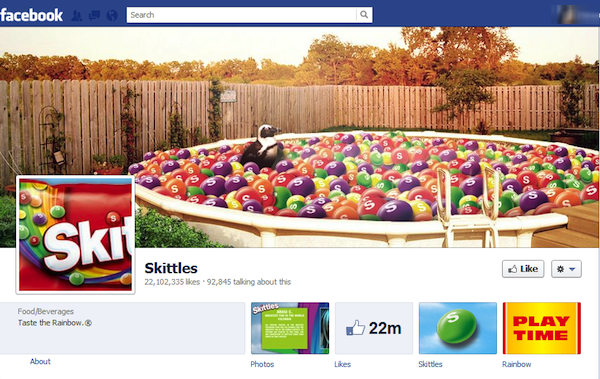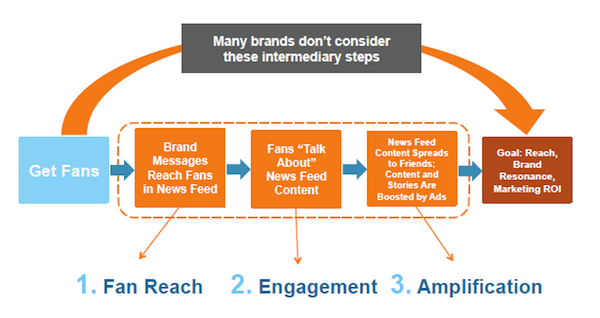A new report from comScore and Facebook examines how social media marketing works and offers some valuable insights with corresponding tips for marketers using Facebook Pages.
The 21-page report focuses on the impact of branded earned and paid media exposure on Facebook Fans and Friends of Fans, with data and analysis from comScore Social Essentials and AdEffx as well as Facebook Insights. Here are the highlights.
For Many Companies, the Facebook Page is the New Brand.com Website

Brand Facebook Pages are becoming the hub for companies like Skittles, whose primary consumer touchpoint is now their presence on Facebook. In March 2012, the Skittles website had 23,000 unique U.S. visitors. Compare that to the Skittles Brand Page on Facebook, which attracted 320,000 visitors in the same period.
Still, Brand Pages aren’t necessarily the primary means of brand engagement on Facebook, the report notes. Users spend the most time in the News Feed, so the number of brand exposures in the News Feed is exponentially higher.
Does this mean you should dump the company site and throw all of your resources into your Facebook Page? Of course not; it’s a shift in behavior but as the report notes, websites are still important, especially for verticals that focus on lead capture and transactions.
Number of Facebook Fans Isn’t a Key Performance Metric

There is still an over-reliance on using the number of Facebook Fans as a key performance indicator. What brands really need is a framework to help them understand how the brand message is delivered at scale, putting their reach, engagement, and amplification in the spotlight.
To increase reach, brands need to optimize their posts to increase the likelihood they’ll be seen at all in the News Feeds of Fans. Using the ad platform can also help brands increase their reach; the report cites the example of promoting a post to ensure it reaches a far larger percentage of a brand’s fan base than would be reached organically.
Engagement on Facebook, reportedly at about 1 percent on average, may seem incredibly low. However, consider how this stacks up against other forms of marketing, they remind readers. For example, DoubleClick reports a 0.1 percent click-through rate (on average) on display ads; Facebook’s 1 percent looks pretty good in comparison. Report authors urge marketers not to discount Facebook based on this metric alone.

Because of the social nature of Facebook, even a low rate of engagement allows for amplification, expanding the reach of the message across the engaged user’s network. Amplification is the most important factor in achieving brand reach, yet the least understood. The report cites an amplification rate of 81x for posts from the top 1,000 brands on Facebook, though they note that in actual practice, doubling the reach of Page Posts through Friends of Fans.
Fans and Friends of Fans Spend More
Regardless of whether the purchasing decisions of Fans and Friends of Fans are actually influenced by earned media exposure, they are “substantially more valuable” consumers in terms of actual purchase behavior, says the report.

ComScore and Facebook found that Fans of Amazon’s Page spent more than twice as much shopping at Amazon than the average consumer. Friends of Fans spent 8 percent more. As noted in the report:
While this research adds weight to the importance of social media, it also brings an important questions to the forefront – are the elevated spend levels among Fans and Friends of Fans the result of the messaging or a pre-disposition among these segments? Put another way, if relying solely on this data, the age-old “correlation or causation” question would be left very much unanswered.
Facebook Earned Media Exposure Influences In-Store Purchase Behavior

Using Starbucks as a test subject, researchers used the test vs. control methodology to examine the behavior of Fans and Friends of Fans over a period of 4 weeks. From the report:
The test results show that by the conclusion of the fourth week after exposure, the test group had a purchase incidence of 2.12 percent, 0.58 percentage points higher than the 1.54 percent incidence in the control group. Also significant is the fact that the nominal lift in purchase incidence increased in each week following exposure, highlighting the latent effects of exposure in driving purchase behavior.
For the full set of insights, download The Power of Like 2: How Social Marketing Works from comScore.




